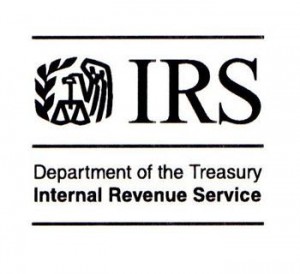 What should a retirement plan sponsor do if it discovers that it has overpaid benefits to a retiree or other former employee? The question has recently arisen in the case of the pension plan of Pontiac, Michigan, which accidentally overpaid many of its retirees an average of $1,000 over a 16-month period. Read more.
What should a retirement plan sponsor do if it discovers that it has overpaid benefits to a retiree or other former employee? The question has recently arisen in the case of the pension plan of Pontiac, Michigan, which accidentally overpaid many of its retirees an average of $1,000 over a 16-month period. Read more.
Category Archives: Employee Benefits
IRS Clarifies That Plans Do Not Necessarily Have to Recoup Overpayments
Defined Benefit Versus Defined Contribution: Lessons from Utah
(Posted on April 26, 2015 by Carol V. Calhoun)
 The Pension Research Council of The Wharton School of the University of Pennsylvania has done a study on the effects of Utah’s change in its pension system. Before the change, employees participated in a defined benefit plan. Employees hired after the change were given a choice between a hybrid (defined benefit/defined contribution) plan or a straight defined contribution plan. Those who failed to make a choice were automatically assigned to the hybrid plan. In general, either of the new plans was less generous than the old defined benefit plan.
The Pension Research Council of The Wharton School of the University of Pennsylvania has done a study on the effects of Utah’s change in its pension system. Before the change, employees participated in a defined benefit plan. Employees hired after the change were given a choice between a hybrid (defined benefit/defined contribution) plan or a straight defined contribution plan. Those who failed to make a choice were automatically assigned to the hybrid plan. In general, either of the new plans was less generous than the old defined benefit plan.
In general, the Pension Research Council found that employees hired after the change had greater turnover than those hired before the change. Moreover, those electing into the hybrid plan were more likely to stay with the employer than those electing into the defined contribution plan. Those who defaulted into the hybrid plan had the highest turnover.
The Pension Research Council concluded that while the change may have saved the state money in pension costs, “public pension reformers must consider employee responses, in addition to potential cost savings, when developing and enacting major pension plan changes.”
Family & Medical Leave Act regulations protect same-sex spouses, regardless of domicile
(Posted on February 23, 2015 by Carol V. Calhoun)
 Immediately after the Supreme Court’s decision in United States v. Windsor, the Department of Labor announced that for purposes of the spousal protections of the Family and Medical Leave Act of 1993 (FMLA), it would recognize a same-sex marriage only if it was legal in the jurisdiction of the couple’s domicile. It has now reversed that position, issuing final regulations which recognize a marriage a) within the United States, if it was valid in the state in which it took place, and b) outside of the United States, if it was valid in the jurisdiction in which it took place and if it could have been entered into in at least one state. The effective date for the final rule was March 27, 2015.
Immediately after the Supreme Court’s decision in United States v. Windsor, the Department of Labor announced that for purposes of the spousal protections of the Family and Medical Leave Act of 1993 (FMLA), it would recognize a same-sex marriage only if it was legal in the jurisdiction of the couple’s domicile. It has now reversed that position, issuing final regulations which recognize a marriage a) within the United States, if it was valid in the state in which it took place, and b) outside of the United States, if it was valid in the jurisdiction in which it took place and if it could have been entered into in at least one state. The effective date for the final rule was March 27, 2015.
Update (June 26, 2015): This rule is in line with the Supreme Court decision in Obergefell v. Hodges, which has now recognized same-sex marriages nationwide.
Employee Benefits Effects of Treasury, IRS and Department of Labor Announcements That All Legal Same-Sex Marriages Will Be Recognized For Federal Tax Purposes
(Posted on February 23, 2015 by Carol V. Calhoun)
 This post was updated on June 26, 2015 to reflect the Supreme Court’s decision in Obergefell v. Hodges, which struck down all state bans on same-sex marriage.
This post was updated on June 26, 2015 to reflect the Supreme Court’s decision in Obergefell v. Hodges, which struck down all state bans on same-sex marriage.
The Treasury Department and the IRS announced on August 29, 2013 that all legal same-sex marriages will be recognized for federal tax purposes. On September 18, 2013, the Department of Labor took the same position for purposes of the Employee Retirement Income Security Act of 1974 (“ERISA“). The announcements and corresponding revenue ruling
Because employee benefit plans are extensively regulated by federal law, this announcement means that all employers will be required to recognize such marriages for many employee benefits purposes. Conversely, employers in states that treat civil unions or domestic partnerships as if they were marriages will nevertheless be forbidden from treating such arrangements as marriages for certain employee benefits purposes. However, the precise impact will depend on whether the plan is subject to ERISA or whether it is a governmental or church plan exempt from ERISA. The chart below sets forth areas in which the announcement will affect the operation of different types of plans.
IRS opens determination letter process for governmental plans
(Posted on February 1, 2015 by Carol V. Calhoun)
 In recent years, the Internal Revenue Service (“IRS”) has been allowing plan sponsors to request determination letters on the qualified status of their retirement plans only during certain periods (cycles). For individually designed governmental plans, such a cycle (Cycle E) opened on February 1, 2015, and will remain open until January 31, 2016. Read more
In recent years, the Internal Revenue Service (“IRS”) has been allowing plan sponsors to request determination letters on the qualified status of their retirement plans only during certain periods (cycles). For individually designed governmental plans, such a cycle (Cycle E) opened on February 1, 2015, and will remain open until January 31, 2016. Read more
Determination Letters for Governmental Plans Don’t Address Pick-Up Contributions and Excess Benefit Arrangements
(Posted on January 23, 2015 by Carol V. Calhoun)
 The IRS has issued a reminder that governmental plan sponsors who apply for IRS determination letters covering the qualified status of their plans can’t rely on a favorable letter for whether:
The IRS has issued a reminder that governmental plan sponsors who apply for IRS determination letters covering the qualified status of their plans can’t rely on a favorable letter for whether:
- contributions made to the plan are the employer’s “pick-up contributions” (i.e., pretax employee contributions under section 414(h)(2) of the Internal Revenue Code), or
- the plan has a qualified governmental excess benefit arrangement (i.e., a separate trust that provides only a participant’s annual benefit in excess of the limits under Internal Revenue Code section 415).
Chart comparing elective plans updated
(Posted on November 24, 2014 by Carol V. Calhoun)
 The chart comparing 457(b) plans, 403(b) plans, 401(k) plans, and deemed IRAs as vehicles for voluntary employee savings has now been updated to reflect recent developments, including new limits for 2015.
The chart comparing 457(b) plans, 403(b) plans, 401(k) plans, and deemed IRAs as vehicles for voluntary employee savings has now been updated to reflect recent developments, including new limits for 2015.
IRS Updates Guidance on Governmental Plan Determination Letters
(Posted on October 9, 2014 by Carol V. Calhoun)
 As of October 9, 2014, the Internal Revenue Service has updated its page on determination letters for governmental plans. The page contains information for any governmental plan considering obtaining an IRS determination letter, including the following: Read more
As of October 9, 2014, the Internal Revenue Service has updated its page on determination letters for governmental plans. The page contains information for any governmental plan considering obtaining an IRS determination letter, including the following: Read more
OPM Finalizes Long-Awaited Phased Retirement Regulations for Federal Government
(Posted on August 8, 2014 by Carol V. Calhoun)
 Highlights of the regulations, as issued by the Office of Personnel Management (OPM) today: Read more
Highlights of the regulations, as issued by the Office of Personnel Management (OPM) today: Read more
NPR: State Tax Laws ‘A Mess’ For Same-Sex Couples And Employers
(Posted on March 19, 2014 by Carol V. Calhoun)
In this segment, Carol V. Calhoun was interviewed by Robin Young, Co-host of National Public Radio’s “Here and Now” program, on the state tax issues affecting same-sex married couples and their employers. Read more
